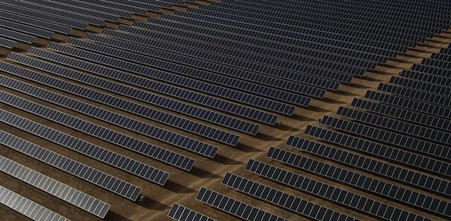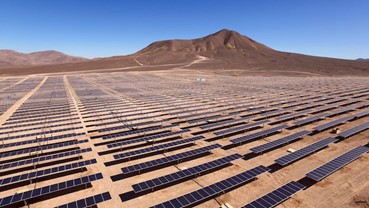Noah Crispi works in the utility scale solar arena, collaborating on projects over 100MW. In the following article, Noah Crispi discusses how desert areas are exceptional for becoming solar powerhouses.
Solar power is a sustainable and inexhaustible source of energy that generates electricity while minimizing environmental impact.
The number of solar farms continuously grows around the world, as the need to transition to clean and renewable energy sources in the face of climate change is urgent. In recent years, desert-based solar energy has emerged as a promising solution to generate sustainable power.
With abundant sunlight and the availability of vast expanses of land, deserts seem to be the most ideal place to build utility-scale solar farms.
Noah Crispi discusses more below on the advantages of situating utility-scale solar projects in arid climates, highlighting the importance of solar energy as a sustainable energy source.
Noah Crispi on the Power of Utility-Scale Solar
A utility-scale solar farm is a solar power facility that is made to produce a substantial amount of electricity for the grid. They usually consist of photovoltaic (PV) panels spread across a large area of land.
Noah Crispi says that these farms play a pivotal role in the transition to a more sustainable energy system as they have the capacity to generate significant amounts of clean electricity while minimizing environmental impact, integrate seamlessly with the grid, and achieve economies of scale.
The following are the usual participants in utility-scale solar projects:
- Solar Project Owners
- Project Developers
- EPCs (Engineering, Procurement, and Construction)
- Project Financiers
- Contractors
- Installers
- Local Government Agencies
- Solar and Energy Storage Equipment Manufacturers
- Utility Companies (the party who buys the generated power)
The Advantages of Placing Utility-Scale Solar Projects in Deserts
Abundance of Sunlight
Noah Crispi explains that the sun’s power in deserts could store sufficient energy that can provide 24/7 power, regardless of the time of day or weather.
Arid regions have abundant sunlight, typically with clear skies and minimal cloud cover. The high solar irradiance, which is the measure of the total power density of sunlight that falls on an area, ensures that solar panels receive maximum sun exposure for the entire year, which leads to higher energy production.
Abundance of Space
Land availability is one of the biggest advantages of deserts over other locations. In deserts, there are no limitations in land compared to rooftop installations or land boundaries usually encountered in urban projects.
Noah Crispi explains that arid regions usually consist of vast expanses of open land that have very low land-use competition, allowing the development of expansive solar installations. Large lands accommodate a large number of PV panels which in turn produces higher amounts of energy.
High Energy Output
Arid climates provide high solar insolation that enhances the potential for energy generation in utility-scale solar farms. This leads to a higher electricity output, resulting in more reliable and sustainable energy production.

Smooth Topography
Noah Crispi says that deserts are characterized by sand and relatively flat land, making it easier to operate compared to rocky or compacted soils. This allows developers to build utility-scale solar farms with ease and with fewer obstacles, streamlining the development process.
Absence of Shade
Minimal structures and vegetation exist in arid landscapes which reduces the risk of shading on solar panels. With nothing to obstruct the panels, energy loss is minimized, ensuring that most of the sunlight is utilized and converted into electricity.
Minimal Weather-Related Downtime
There are fewer weather-related disruptions in deserts like snowfall or heavy rainfall which can greatly impact the production of solar energy, making arid regions a suitable choice for building utility-scale solar farms.
Fewer Regulations
There are fewer regulations imposed on solar park developments in arid regions compared to other locations. Because of this, developers can reduce administrative complexities and expedite project approvals. This means more solar farms can be built in a short time span.
Noah Crispi notes that utilizing arid regions to build utility-scale solar farms leverages the abundance of sunlight, ample land availability, enhanced energy generation, and more. Collectively, these benefits contribute to the efficiency and sustainability of solar energy production, which gives deserts an important role in the worldwide transition to clean and renewable sources of power.
The rise in the number of utility-scale solar farms serves as a substantial step toward a more environmentally conscious future. Noah Crispi says that as they continue to grow, not only do they meet the ever-growing energy demands but also significantly reduce greenhouse gas emissions and contribute to the preservation of our planet for the use of future generations.











